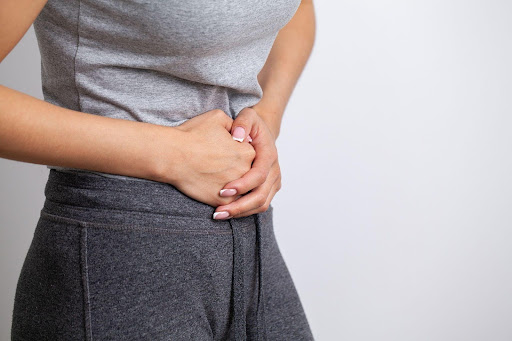
Coping Strategies for Fibroids and Menopause
Menopause is a natural phase in women’s life marking the end of the menstrual cycle and childbearing age. While it brings a lot of symptoms like hot flushes, mood swings, night sweats, anxiety, and hypertension, the occurrence of fibroids is less pronounced in menopausal age, which may be because they are quite common among women of reproductive age.
However, fibroids pose unique challenges and questions when they occur in menopausal women. Through this blog, let’s understand what fibroids are, what happens to fibroids during menopause, their implications for women’s health, their symptoms, and treatment regimens.
What are Fibroids?
Fibroids are the non-cancerous or benign growth of muscles and fibrous tissues in and around the uterus. In biological terms, these benign tumors are called leiomyomas or myomas with different shapes, sizes, and locations within the uterus. The fibroids are primarily associated with the uterus, they are typically limited to this organ and do not occur elsewhere in the body. In rare cases, they develop in areas outside of the uterus e.g., the cervix, broad ligaments supporting the uterus, and in the pelvic region, called “extra-uterine fibroids” or “parasitic fibroids”.

While the exact cause of fibroid development is not fully understood, they are believed to be influenced by hormones, particularly estrogen and progesterone, the key hormones regulating menstrual cycle. The noteworthy point here is that hormonal fluctuation is the root cause of fibroid development rather than diminishing hormones; they carry forward myomas from perimenopause to menopause age.
Do they have Symptoms?
Yes, they do have symptoms that can vary depending on their location, size, and number. They may have devastating symptoms in menstruating women while, it is reported that in menopausal women, fibroids get diminished and so with their symptoms shrink due to insufficiency of hormones.
Some of the common symptoms are:
- Heavy Menstrual Bleeding: In menstruating women, fibroids can cause excessive menstrual bleeding, leading to anemia.
- Pelvic Pain and Pressure: When fibroids enlarge in size, they create pressure on the surrounding organs which makes the feeling of fullness frequent urination.
- Constipation: Due to pressure on the rectum, it may cause constipation.
- Body Ache: Sometimes, fibroids also pressurize the nerves, causing pain in the lower back or legs.

What are the Types of Fibroids?
Based on their location in or around the uterus, fibroids are of different types affecting different parts of the uterine structure:
- Intramural Fibroids: The most common type, develop within the muscular wall of the uterus. When they grow, they enlarge the size of the uterus and cause symptoms like heavy menstrual bleeding, pelvic pain, and pressure on the surrounding organs.
- Subserosal Fibroids: This type of fibroid develops on the outer surface of the uterus as its name indicates (serosa). They tend to grow quite larger and make the uterus lopsided (larger on one side). Since they grow on the outer surface of the uterus, they extend outwards and press the surrounding organs like the bladder, leading to urinary or digestive issues.
- Submucosal Fibroids: These fibroids develop just beneath the inner lining of the uterus (endometrium). Unlike subserosal fibroids, they protrude into the uterine cavity and cause significant symptoms like heavy bleeding and fertility issues. Although they are not so common, they must be consulted with the healthcare provider if suspected or diagnosed.
- Pedunculated Fibroids: When fibroids grow on the pedicle (stem-like of stalk-like structure) of the uterus, called pedunculated fibroids. If they are growing inside of the stalk, they are submucosal pedunculated and if they are outside of the stalk, they are subserosal pedunculated fibroids.
- Cervical Fibroids: These fibroids are less common and develop in the cervical tissue (the lower part of the uterus that connects to the vagina). If they exist during pregnancy, cause issues like difficulty in childbirth and passage of menstrual blood.
What Happens to Fibroids during Menopause?
While fibroids usually shrink and symptoms diminish during menopause due to a decline in estrogen and progesterone levels, still there are various symptoms associated with fibroids during this time.
The symptoms include:
- Persistent pelvic pain, the feeling of pressure in the abdominal region, and urinary issues.
- While menstrual bleeding usually ceases after menopause, some women with fibroids might experience abnormal uterine bleeding even during menopause. This could be an indicator of other health issues and should be consulted by healthcare providers.
- During menopause, developed fibroids go towards a shrinking process called degeneration, where the tissues in the fibroids break down. This process causes severe pain, discomfort, and sometimes fever.
- In the case of large fibroids, even after shrinking, they cause pressure on nearby organs like the bladder and rectum, leading to the symptoms of frequent urination and constipation.
- Women experiencing menopausal symptoms undergo HRT to alleviate the bothersome symptoms however, HRT can reintroduce estrogen or progesterone in the body and stimulate the growth of fibroids and hence, exacerbate symptoms of fibroids even after menopause.
Science Behind the Hormonal Influence on Fibroids
Estrogen is a primary driver for growth and development while progesterone supports the growth and provides suitable conditions for the developed fibroids in the uterine lining. Fibroids have estrogen receptors, and when estrogen levels are high, the receptors get stimulated and produce these non-cancerous tumors. This is why fibroids often grow during the reproductive years of women when estrogen levels are higher.
Furthermore, estrogen promotes cell proliferation in the uterine lining. This increased cell turnover leads to the enlargement of fibroids. After menopause, estrogen levels decline significantly and since fibroids are responsive to estrogen, this reduction often leads to shrinkage of fibroids. The decrease in estrogen usually results in reduced stimulation of fibroid growth.
Do Symptoms Change during Menopause?
The symptoms of fibroids do change during menopause however, their impact can vary depending on several factors, including the size and location of the fibroids, overall health, and individual hormonal changes. The changed symptoms during menopause are:
- Reduction in Menstrual Symptoms: One of the primary symptoms of fibroids is heavy menstrual bleeding (menorrhagia). As women approach menopause, the menstrual cycle becomes less frequent and eventually stops, which often leads to a reduction in heavy bleeding associated with fibroids.
- Pelvic Pressure and Pain: It is experienced by menstruating women but after menopause, these symptoms are reduced however, some women may continue to experience pelvic pain and pressure because the size of the fibroids matters a lot.
- Bladder and Bowel Symptoms: In menopause, as estrogen levels decrease, fibroids might shrink, potentially alleviating these symptoms.
- Growth and Size of Fibroids: Usually fibroids tend to shrink after menopause due to lower estrogen levels however, the extent of shrinkage can vary, and some fibroids may remain the same size or continue to cause symptoms.
- New Symptoms: In some cases, the hormonal fluctuations that occur during the translational phase leading to menopause can temporarily exacerbate fibroid symptoms before they eventually subside. Fibroids sometimes lead to bleeding which is unexpected during menopause and must be investigated.
Although fibroids become less of a concern after menopause due to the natural decline in estrogen levels, however, fibroids do not always disappear completely, and in some cases, they can cause problems even after menopause. Therefore, it is important to note that while fibroids are generally benign, any new symptoms related to fibroids must be evaluated by a healthcare provider to rule out other conditions like uterine cancer.
What are the Treatment Options?
Treatment regimens for fibroids are available based on the severity of symptoms, the size and location of fibroids, and the woman’s overall health. The regimens range from the most conservative approaches to surgical interventions:
- Observation and Monitoring: In cases where symptoms are mild, healthcare providers usually recommend regular monitoring of fibroids with pelvic examinations and imaging to track any changes. To manage the mild symptoms, sometimes, NSAIDS are also prescribed specific to the patients.
- Medication: Medications such as GnRH agonists are being prescribed to menopausal women with fibroids. It reduces the estrogen levels temporarily which helps shrink fibroid and relieve symptoms. They are typically given for the short term because of their potential side effects. Sometimes, SERMS (selective estrogen receptor modulators) are also given which block estrogen’s effects on fibroids and help reduce their size.
- Uterine Artery Embolization (UAE): It is one of the minimally invasive procedures which involves injecting particles such as gelatin sponge, embosphere microspheres, hydrogel particles, and polyvinyl alcohol particles into the blood vessels that supply the fibroids, thereby blocking the blood flow and causing the fibroids to shrink. The healthcare providers first examine the type, location, and size of the fibroid and then select the specific type of particles to be injected.
- MRI-guided Focused Ultrasound: This is a technique in which focused ultrasound waves guided by MRI are being used to destroy the fibroid tissues.
- Hormonal Replacement Therapy (HRT): If a menopausal woman is already on HRT, the type and dose of hormones can affect fibroids, and therefore, medical practitioners adjust or discontinue HRT if fibroids are symptomatic and progressive.
- Surgical Intervention: It includes myomectomy (removal of fibroids from the uterine lining while preserving the uterus). It is done either through the vagina (hysteroscopically), abdominal incisions (laparoscopically), or via open surgery. It is usually considered for women who wish to retain their fertility. If the woman has severe symptoms, unresponsive treatments, and has crossed the childbearing age, a hysterectomy is also recommended to avoid other complications.
Preventive Measures and Lifestyle Considerations
While there is no guaranteed way to prevent fibroids, certain lifestyle choices may reduce the risk of developing them. A balanced diet including a rich diet of fruits, vegetables, and whole grains supports overall health and hormonal balance. Moreover, maintaining a healthy weight can reduce the risk of developing fibroids.
Final Takeaway
Fibroids and menopause are significant aspects of a woman’s health that often intersect in complex ways. While menopause generally leads to a reduction in fibroid growth and symptoms due to declined estrogen levels, some women may continue to experience challenges related to fibroids even after menopause.
Understanding the nature of fibroids and their interaction with menopause can empower women to make informed decisions about their health. Whether through medical interventions, lifestyle changes, or alternative therapies, women have a range of options for managing fibroids and navigating the menopausal transition.
Citations
- Menopause (2020). Uterine Fibroids in Menopause and Perimenopause. Retrieved from https://www.ncbi.nlm.nih.gov/pmc/articles/PMC6994343/pdf/nihms-1537755.pdf (doi:10.1097/GME.0000000000001438)
- Society of Women’s health Research (2024). Uterine Fibroids and Menopause. Retrieved from https://swhr.org/wp-content/uploads/2021/11/7_SWHR_Fibroids_Toolkit_Menopause.pdf
- Women’s health concern fact sheet (2022). Fibroids. Retrieved from https://www.womens-health-concern.org/wp-content/uploads/2022/11/07-WHC-FACTSHEET-Fibroids-NOV2022-A.pdf
- Case reports in obstetrics and gynaecology (2018). A Novel Case of Fibroids after Menopause. Retrieved from https://onlinelibrary.wiley.com/doi/10.1155/2018/9104719

Poonam Rawat





